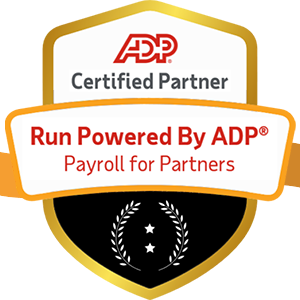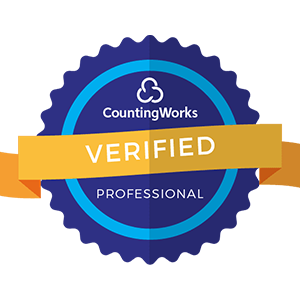
Remote work has been a hot topic in recent years, especially since the pandemic forced many companies to embrace work-from-home arrangements. But workplace flexibility goes far beyond just the ability to work remotely.
True flexibility means giving employees more control over when, where, and how they work to optimize both productivity and well-being. Here's a comprehensive look at the various dimensions of workplace flexibility and why it's reshaping the future of work.

At its core, workplace flexibility is about empowering employees with more autonomy and control over their work. The key dimensions include:
The ability to adjust work hours and schedules to fit life's demands. This includes working non-traditional hours, shifting schedules as needed, compressing workweeks into fewer days, and having control over daily start and end times.
The option to work from different places—whether that's from home, a co-working space, a satellite office, while traveling, or any combination of these locations that optimize productivity and well-being.
Having leeway in how work gets done. This means letting employees choose when to collaborate versus work independently, what tools and processes to use, and how to structure their workflows for maximum effectiveness.
The most progressive companies don't just allow remote work—they give employees flexibility across all these dimensions. For example, Microsoft now has a "hybrid workplace flexibility guide" that lays out comprehensive options for when and where work gets done. Employees can choose their preferred mix of in-office and remote work, adjust hours as needed, and are trusted to make decisions about how to be most productive.
Study after study has demonstrated that when employees have more autonomy and control over their work, remarkable things happen:
Research shows that employees with flexible work options were significantly more productive and engaged. 78% said flexible work arrangements made them more productive, and 80% reported feeling more engaged at work.
A FlexJobs survey found that 81% of respondents said a flexible job would make them happier in general. Those with flexible work options consistently report higher levels of job satisfaction across industries.
Employees with flexibility tend to have lower stress levels, better work-life balance, and improved well-being overall. One comprehensive study found that employees with flexible schedules experienced 20-25% reductions in stress compared to those without flexibility.
Flexibility has been directly linked to better overall job performance. Employees are more motivated, make fewer errors, and provide superior customer service. It's a genuine win-win for both employees and employers.
It's clear that giving employees more autonomy over when, where, and how they work unleashes their potential. People consistently do their best work when they feel trusted and empowered to optimize their own productivity and well-being.
While the benefits of workplace flexibility are compelling, companies need to be thoughtful about how they roll out and manage flexible work programs. Here are proven strategies:
Judge performance based on results and goal achievement, not hours worked or physical presence in the office. Define clear goals, establish measurable metrics, and trust employees to deliver outcomes.
Give people the freedom to design their ideal workdays and make it easy to adjust schedules or work locations as needed. Provide the right tools, technology, and resources to work flexibly without barriers.
Be more selective about what requires real-time, in-person collaboration versus what can be accomplished asynchronously or remotely. Establish clear communication norms, etiquette, and expectations for different types of interactions.
Managers and leaders must model flexibility and healthy work-life boundaries. Avoid sending late-night emails, respect time boundaries, and set realistic expectations that support rather than undermine flexibility.
Make a proactive effort to build social capital, foster team bonding, and keep people feeling connected even when working apart. This is absolutely critical for maintaining engagement and loyalty in flexible environments.
Review HR policies, promotion criteria, benefits, and incentive structures to ensure they genuinely support flexible work rather than inadvertently discouraging it.
The most successful flexible work programs are tailored to each company's unique culture, workflows, and talent needs. There's no universal approach, but the common thread is trusting employees and giving them the space to do their best work in ways that suit them best.
Offering flexible work options isn't just good for employees—it delivers measurable business benefits:
Flexibility is increasingly a requirement for many job seekers, especially in competitive fields. 80% of workers say they would choose a job that offered flexible working over one that didn't, making it a critical recruitment tool.
Employees are significantly more likely to stay with an employer long-term when they have the flexibility they need to thrive. 74% of employees say flexible work options would make them less likely to leave a company.
Flexible companies can save substantially on real estate, utilities, travel, and turnover-related costs. Dell, for example, has saved an average of $12 million per year with its comprehensive flexible work program.
Flexible work arrangements make jobs more accessible to people with disabilities, caregiving responsibilities, and other potential barriers. This dramatically expands the available talent pool and enhances organizational diversity.
Offering genuine flexibility makes a powerful statement about a company's culture and values. It serves as an attractive differentiator in an increasingly competitive talent market.
A comprehensive study by Gartner found that companies with high levels of flexibility saw 10% better overall financial performance than their peers. Flexibility quite literally pays off—it's quickly becoming a business imperative, not just a nice-to-have perk.
The COVID-19 pandemic dramatically accelerated the adoption of flexible work, compressing years of incremental change into just a few months. And there's absolutely no going back. Here's what the future holds:
The traditional 9-5, Monday-Friday office model is officially over. Accenture research found that 83% of workers globally prefer a hybrid work model. Expect to see increasingly fluid arrangements that blend in-person and remote work seamlessly.
Companies will become more sophisticated about tailoring flexibility to different roles, personalities, and life stages. Think flexibility stipends, unlimited PTO policies, job-sharing arrangements, and phased retirement options.
As flexibility becomes mainstream, it will make many jobs more accessible to broader populations. This includes people with disabilities, working parents, older workers, and talent living outside major metropolitan job hubs.
Continued innovation in tools and technologies will support increasingly seamless flexible and remote work experiences. Expect advances in virtual presence, immersive collaboration platforms, and intelligent workflow automation.
Leading companies are already embracing bold visions for flexibility:

One common misconception about workplace flexibility is that it's a luxury reserved for privileged tech workers or creative professionals. In reality, the need for and benefits of flexibility cut across all industries and job types:
The key is getting creative and intentional about building flexibility into jobs in ways that work for both employees and business needs. Even roles that seem inherently inflexible often have more potential for adaptation than initially apparent.
Workplace flexibility isn't a passing trend—it's a transformational shift already underway. For organizations looking to build more flexibility into their cultures and operations, here are guiding principles:
Weave flexibility into the fabric of your employee value proposition. Make it part of your organizational mission and employer brand, not just a policy add-on.
Instead of selectively allowing flexible arrangements, make flexibility the standard approach. Then thoughtfully identify specific jobs or situations where traditional structures truly serve better.
Let go of command-and-control management habits. Give employees the tools and autonomy to work in ways that suit them best while maintaining focus on measurable results.
Prioritize activities that foster belonging and connection, especially for remote and hybrid workers. Proactively work to mitigate proximity bias and ensure equal opportunities.
Provide access to tools that enable seamless communication and collaboration across time and space. However, be mindful of digital overload and maintain healthy technology boundaries.
Capture data on how flexibility impacts key outcomes like productivity, retention, employee satisfaction, and business performance. Use insights to continuously adjust and improve your approach.
We're on the cusp of a new era of work—one where rigid, one-size-fits-all models give way to more fluid, personalized, and autonomous working arrangements. Where outdated notions of face time and clock-watching are replaced by a laser focus on results and performance. Where work finally fits into life, rather than dominating it.
In this future, flexibility isn't a competitive differentiator—it's table stakes. The organizations that will thrive will be those that embrace flexibility in all its forms, not just as a crisis response or afterthought, but as a core strategy for unleashing human potential.
Because at the end of the day, workplace flexibility is really about creating optimal conditions for people to do their best work. It's about recognizing that employees are complex human beings with full, multifaceted lives. It's about replacing cultures of burnout and overwork with cultures built on trust and empowerment.
When we give people the space and support to integrate work meaningfully into their lives, remarkable things happen. Stress decreases while engagement soars. Innovation flourishes, productivity reaches new heights. People bring their full, authentic selves to work—and that benefits everyone.
The bottom line: Flexibility isn't just the future of work—it's the present reality that forward-thinking organizations are already embracing. The question isn't whether your company will adopt flexible work practices, but how quickly and comprehensively you can implement them to attract talent, boost performance, and build a sustainable competitive advantage.
So here's to a future where flexibility is the rule, not the exception. Where work truly works for everyone. The transformation won't happen overnight, but make no mistake: flexibility is the future, and the future is bright


